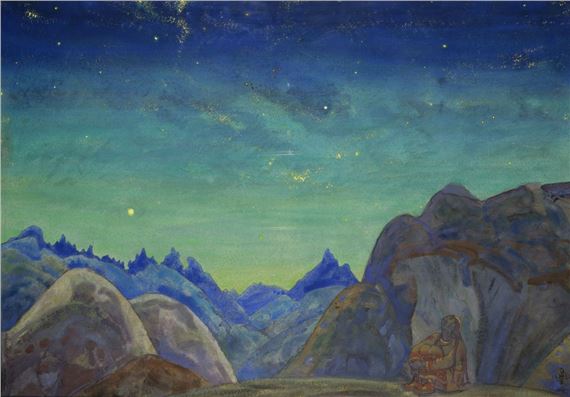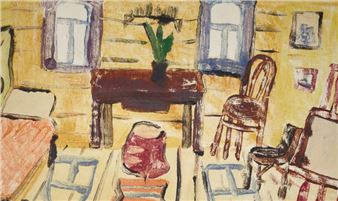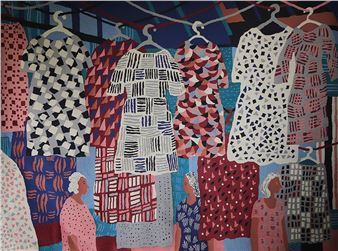Heroes and contemporaries of the Silver Age
At the turn of the century the previous aesthetic model was dismantled and the search for a new one began, hence the diversity of styles, trends, original techniques, theories, associations and artistic communities. Members of the World of Art and the Blue Rose Associations and artists who represented Symbolism, Avant-garde, Primitivism, Futurism, Constructivism, Neoclassicism and other artistic movements, co-existed during a very brief period that lasted barely two decades. But the year 1917 marked the beginning of the termination of the diverse opinions and views on art.
The multiple directions were manifested in the failure to find a unifying vector of the era and to give it a single name, as the most commonly used concepts of the Art Nouveau and Symbolism reflected only some of the phenomena. The poetic term ÔÇ£Silver AgeÔÇØ has taken root: it does not imply any particular trend in art, but balances and reconciles everything to create an image of the time of a brilliant and tragic decline of the Empire.
The exhibition reveals the new and characteristic features contributed by each of the Associations and original methods to the development of art of portraiture, landscape and genre painting, by way of meanings and forms. We will see the polyphony of styles and original methods and the modes of their interaction and mutual refinement.
The exhibition built around the central figures of the era includes graphic works by Alexandre Benois and Kazimir Malevich, Valentin Serov and Marc Chagall, Mikhail Vrubel and Wassily Kandinsky, and L├®on Bakst and Mikhail Larionov. The exhibition will most objectively and emphatically portray the Silver Age.

Recommended for you
At the turn of the century the previous aesthetic model was dismantled and the search for a new one began, hence the diversity of styles, trends, original techniques, theories, associations and artistic communities. Members of the World of Art and the Blue Rose Associations and artists who represented Symbolism, Avant-garde, Primitivism, Futurism, Constructivism, Neoclassicism and other artistic movements, co-existed during a very brief period that lasted barely two decades. But the year 1917 marked the beginning of the termination of the diverse opinions and views on art.
The multiple directions were manifested in the failure to find a unifying vector of the era and to give it a single name, as the most commonly used concepts of the Art Nouveau and Symbolism reflected only some of the phenomena. The poetic term ÔÇ£Silver AgeÔÇØ has taken root: it does not imply any particular trend in art, but balances and reconciles everything to create an image of the time of a brilliant and tragic decline of the Empire.
The exhibition reveals the new and characteristic features contributed by each of the Associations and original methods to the development of art of portraiture, landscape and genre painting, by way of meanings and forms. We will see the polyphony of styles and original methods and the modes of their interaction and mutual refinement.
The exhibition built around the central figures of the era includes graphic works by Alexandre Benois and Kazimir Malevich, Valentin Serov and Marc Chagall, Mikhail Vrubel and Wassily Kandinsky, and L├®on Bakst and Mikhail Larionov. The exhibition will most objectively and emphatically portray the Silver Age.

 ARTISTS
ARTISTS















